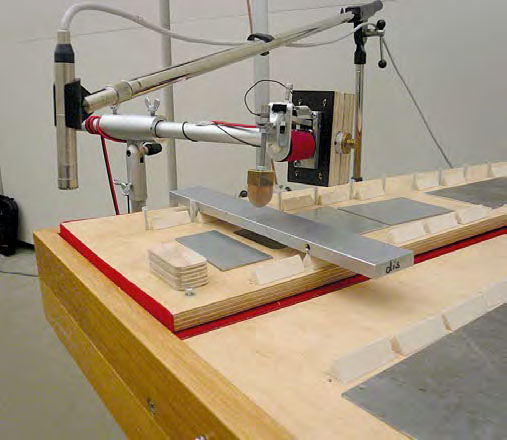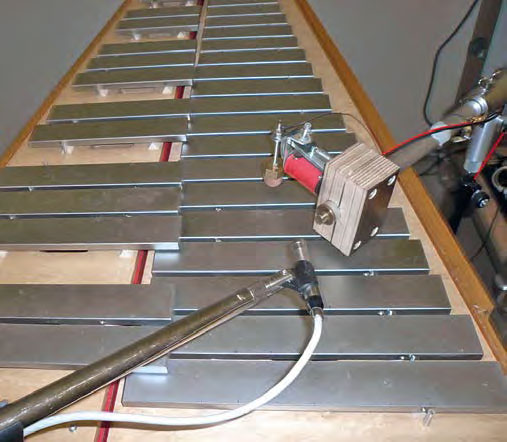

In close cooperation with the instrument builder SCHIEDMAYER CELESTA, the researchers at the Fraunhofer IBP investigated how to optimize the sound of a newly developed manual carillon. One of the characteristics of a mature musical instrument is the pitch of each individual tone that changes, but not its timbre. This creates a uniform overall sound that is perceived by the listener as melodious.
The sound plates of the new instrument met the ambitious objectives only in the medium tonal range. While the decay time of the high pitches was too short, the fundamental tone of the low pitches could not be excited sufficiently due to the large mass of the sound plates.
The modifications to the instrument had to meet two special requirements: Firstly, the width of each sound plate should remain the same, otherwise playing the instrument would become more difficult. Secondly, the thickness of the plates should have a minimum value to ensure that the shorter plates for the higher pitches are not moved from their original positions during playing.
To ensure that the sound characteristics of high pitches, both with regard to sound intensity and sound decay, do not differ significantly from the sound characteristic of low pitches when listened to, measurements, theoretical models and design considerations were combined. The practical application of the mathematical formulas particularly aims at a much more precise dimensioning of the resonators. The research activities also focused on the dependence of the sound spectrum and the decay of the sound on the material and mass of the beating, in order to gain knowledge for suitable design principles.